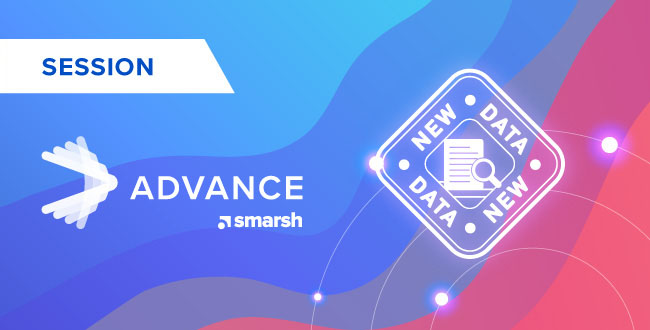Smarsh Advance Recap: Addressing Today’s Collaborative Technology Realities in E-Discovery Processes
Listen to the article.
In this article series, we relive some of the most insightful Smarsh Advance 2022 conversations about the evolving compliance, communication and technological landscapes affecting regulated industries.
More businesses are adopting collaboration platforms — such as Zoom, Slack and Microsoft Teams — now that hybrid work has gained traction with no signs of letting up. But for businesses in regulated industries, they need to ensure their e-discovery tools are adapting at the same pace.
In the Smarsh Advance session, Addressing Today’s Collaborative Technology Realities in E-Discovery Processes, we explore how e-discovery tools can catch up to how business is conducted today.

New forms of processing, review and production
Understanding the context of a specific communication and then incorporating that into e-discovery review can be challenging. People are no longer communicating on one platform or tool. Modern communications have evolved to where a single conversation can start as an email, continue on phone texts, and end on Microsoft Teams.
Communications are also more than text. Pictures, gifs and emojis all play a part in communicating and collaborating, and these all must be considered within an investigation. During the e-discovery process, you must be able to retrieve this data together in a meaningful way.
By understanding how these unique modalities’ impact e-discovery and the rapid pace in which they change, you'll be able to create and maintain more efficient and effective e-discovery processes.
Culling through the data
It’s crucial that you can identify where data is stored, which applications or collaboration groups are being used, and what level of access people have to the data. With so many sources of communications data to cull through, technologies such as artificial intelligence are making it much more efficient to sift through massive amounts of data while providing greater transparency into the context and intent of the communications.
“There is no longer the excuse that it’s just too voluminous or too costly,” says Bree Murphy, Senior Solutions Consultant at Exterro.
Data management and control
Data management remains paramount to advancing e-discovery processes. Firms should put parameters around what tools they use.
A best practice approach should include understanding any limitations that are available, such as turning off certain features — chat, video recording, etc. — when they are prohibited. Many tools and platforms now provide compliance and governance features. These allow the platform or tool administrator to limit or disengage specific features to reduce the risk of users not following proper protocols.
Firms can achieve greater cost and review efficiency when they can maintain more control of their data, including:
- Where the data goes
- Who reviews the data
- How the data is analyzed
- What actions are being taken over flagged risks
“A lot of control can exist within the platforms,” says Tim Anderson, Senior Managing Director at FTI Consulting. “We’re going to end up in a much better spot if we invest the time upfront to see what and how information is being preserved, understand the complexity of formats coming out of those systems, and develop the tools, workflows and best practices to review all that data.”
Data governance and shifting to a collaborative process
Firms should evaluate their data governance policies. A part of good data governance is having a data retention policy that is understood and followed by the firm. Firms need to be clear about what data should be retained and for how long, particularly in regulated industries.
Training should address:
- What should (and should not) be kept, and why
- What is considered data
- What level of privacy (if any) are employees and contractors entitled to
Having a shared view of risk when making decisions about which tools to allow legal, compliance, human resources and IT to use can benefit the firm. By being on the same page, firms can consolidate e-discovery tools to better serve their broader needs, including compliance, cybersecurity and privacy requests.
Share this post!
Smarsh Blog
Our internal subject matter experts and our network of external industry experts are featured with insights into the technology and industry trends that affect your electronic communications compliance initiatives. Sign up to benefit from their deep understanding, tips and best practices regarding how your company can manage compliance risk while unlocking the business value of your communications data.
Ready to enable compliant productivity?
Join the 6,500+ customers using Smarsh to drive their business forward.





Subscribe to the Smarsh Blog Digest
Subscribe to receive a monthly digest of articles exploring regulatory updates, news, trends and best practices in electronic communications capture and archiving.
Smarsh handles information you submit to Smarsh in accordance with its Privacy Policy. By clicking "submit", you consent to Smarsh processing your information and storing it in accordance with the Privacy Policy and agree to receive communications from Smarsh and its third-party partners regarding products and services that may be of interest to you. You may withdraw your consent at any time by emailing privacy@smarsh.com.
FOLLOW US